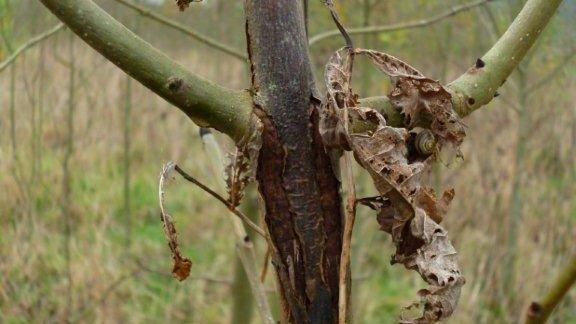Ash dieback 'resistant' tree named Betty found in Norfolk
- Published
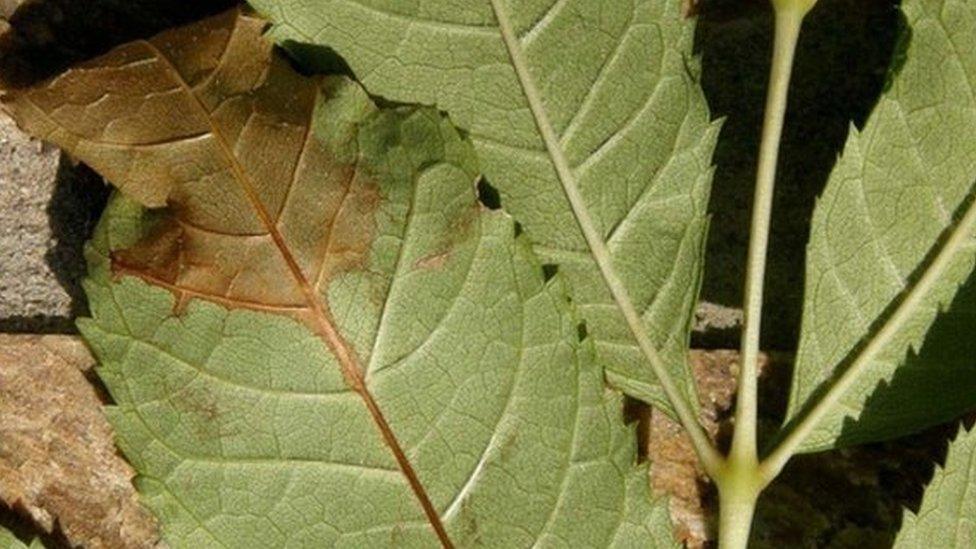
Ash dieback disease first appeared in the UK in February 2012
An ash tree showing signs of being highly resistant to the ash dieback disease has been identified in Norfolk, the government has said.
The tree, found near Norwich and named Betty by researchers, is thought to be the first UK native ash tree showing "strong tolerance".
The find raises the possibility of using selective breeding to develop trees less susceptible to the fungus.
Scientists have called it a "large first step" in tackling ash dieback.
Ash dieback, also known as Chalara, was first discovered in Poland, came to the UK via diseased nursery stock in 2012 and is responsible for killing thousands of trees.
The resistant tree, in Ashwellthorpe Wood, was found by the Nornex research project, a team from the UK, Denmark and Norway and their findings have been published by the Department for Environment, Food and Rural Affairs (Defra) which funded the research along with the Biotechnology and Biological Sciences Research Council (BBSRC).
Genetic markers
The team conducted a genetic analysis on 182 infected ash trees in Denmark and developed three genetic markers which enabled them to predict whether or not a tree is likely to be mildly or strongly tolerant.

Researchers came to see Betty in Ashwellthorpe, which is between Long Stratton and Wymondham
Many trees in Ashwellthorpe Wood were infected but exceptions were found which showed low levels of infection. Betty, which is about 200 years old, is healthy despite being next to infected trees and showed "high tolerance".
Researchers hope if they can identify individual trees that are less susceptible they could breed a resistant variety more likely to survive the disease.
Professor Allan Downie, the coordinator of the Nornex consortium, said: "The identification of genetic markers for trees with low susceptibility to ash dieback is a large first step, one of many that will be needed in the fight to help ash trees survive this disease epidemic."
Chief plant health officer Professor Nicola Spence said it was an "exciting development in tree health" which would "help ensure that Britain's stock of ash trees, and its countryside, remains resilient against pests and disease in the future".


Dieback has devastated ash trees across Europe
What is ash dieback disease?
Ash dieback is caused by the fungus Hymenoscyphus fraxineus (previously Chalara fraxinea)
Symptoms include leaf loss and crown dieback
It was first recorded in Europe in 1992
It first appeared in the UK at a Buckinghamshire nursery in February 2012

- Published1 August 2015
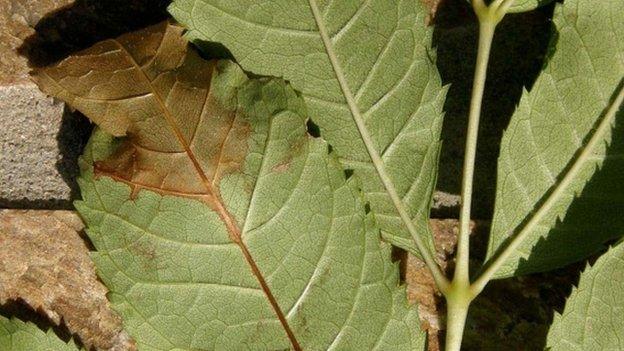
- Published21 January 2013
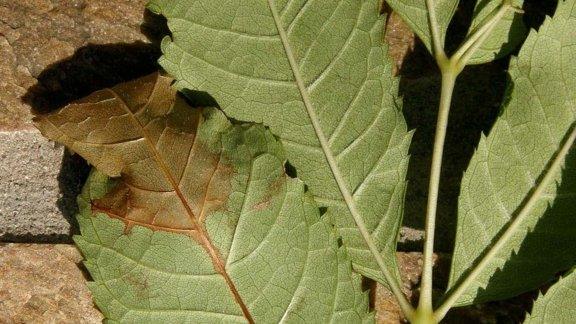
- Published12 May 2013
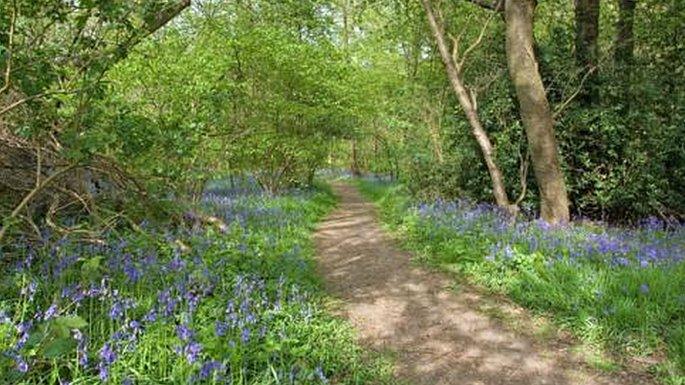
- Published7 November 2012
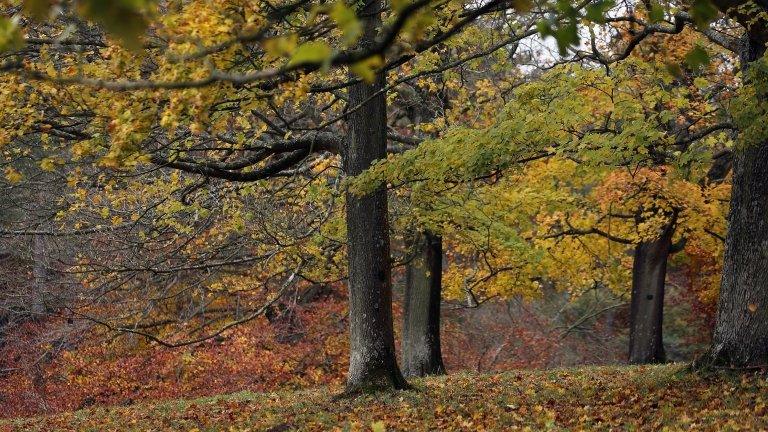
- Published29 October 2012
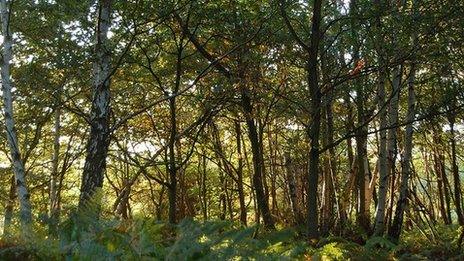
- Published26 October 2012
